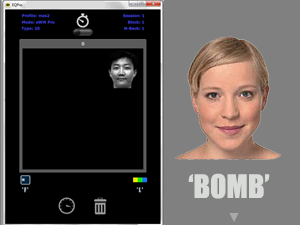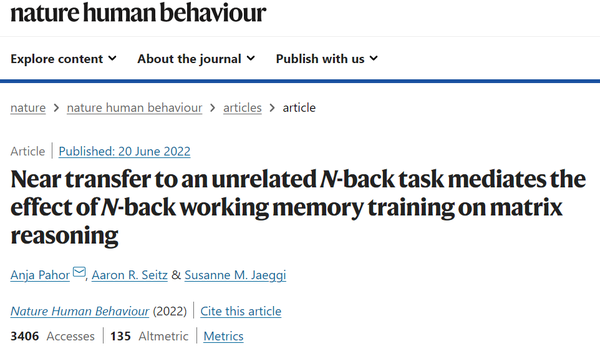In this article we review the evidence for conditions under which n-back training
N-Back for IQ: A Research Controversy

Matrices tests have been the gold standard of fluid intelligence (IQ). It requires the test taker to pick an object or pattern that would best fit in a matrix of other objects or figures using reasoning and working memory. Try the problems above to get a feel for this ability.
Training Effects: Game-Specific, Near & Far Transfer
There are three types of training effects from brain training. 1. Far transfer is where training results in improvements in dissimilar contexts to the training game, and where there are not many shared perceptual or task features – such as between the n-back game and matrices IQ tests or problem-solving at work. 2. Near transfer is gaining specific cognitive skills used in the training game that can be applied in other contexts with similar features – such as improving in working memory updating in the classic n-back that results in improved performance on a novel n-back game – such as the emotional dual n-back.

3. Game Specific. When only highly game-specific strategies are used in the brain training game there may be no transfer to other contexts. In this case, all you get are practice-effects on that particular game.
Latest Research: Resolving the DNB Controversy
A team of psychologists at UC Riverside and UC Irvine just published a study in the highly reputable Nature Human Behavior journal found that people who show near transfer from n-back training are likely to show far transfer to matrix reasoning tests. (1) With this research they provide offer a strong explanation of the controversy surrounding n-back training.
The researchers conducted three randomized control trials involving nearly 500 participants and replicated the same finding: The extent to which people improve on untrained n-back tasks (near transfer), determines whether far transfer to an abstract reasoning task is successful.
“What working memory researchers get most excited about is whether there is transfer to fluid intelligence,” said coauthor Aaron Seitz, a professor of psychology at UCR. “What we say in our paper is simple: If you get near transfer, it is very likely that you also get far transfer. …not everybody gets near transfer for a variety of reasons, such as participants disengaging during training or because that particular training is ineffective for them. These people appear not to get far transfer. By better understanding why this type of memory training or ‘intervention’ works for some people but not others, we can move forward with a new generation of working memory training games or use approaches that are more tailored to individuals’ needs.”
Here are the conclusions of the study:

Will Your Training Work: A Simple Test
The good news is that for near transfer from n-back brain training is the general rule. (2) If you are training with IQ Mindware apps there is a simple test you can use mid-training to see if your training will result in far transfer to IQ abilities as measured in matrices tests – simply try one of the other n-back games (e.g. emotional n-back) or 1G n-back, to see if you get ‘near transfer’ – in other words, the task is easier (your n-back score is higher) than it would have been without training on the first n-back game. (You will need to create a new Profile to do this.) It should be obvious to you if there is ‘transfer’ of this sort as your n-back level should be similar to the n-back level you have attained through training.
References
(1) Pahor, A., Seitz, A.R. & Jaeggi, S.M. (2022). Near transfer to an unrelated N-back task mediates the effect of N-back working memory training on matrix reasoning. Nature Hum Behav (2022). https://doi.org/10.1038/s41562-022-01384-w
(2) Giovanni S. N., Deniz Aksayli, N.K., K. Semir T., Tomoko, T., Yasuyuki, G., Fernand, G. (2019). Near and Far Transfer in Cognitive Training: A Second-Order Meta-Analysis. Collabra: Psychology 1; 5 (1): 18. https://doi.org/10.1525/collabra.203

